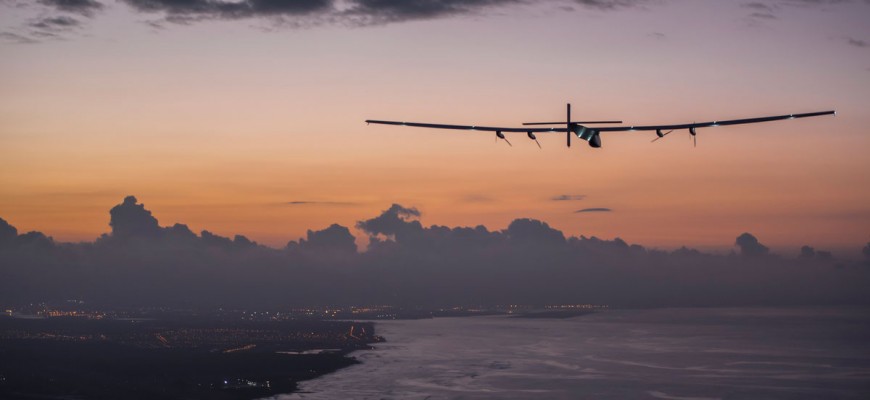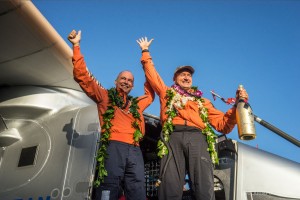
The solar powered plane, Solar Impulse 2 (Si2) has made the incredible, record breaking flight from Nagoya, Japan to Hawaii. The 7212km journey took 4 days 21hrs and 52 minutes and not a single drop of fuel.
The flight was made possible by the 17 000 solar panels covering the planes 72meter wing span. These solar panels power the four electric motors and charge a lithium ion battery bank. This was the 8th and longest flight of 13 flights that will circumnavigate the globe without using any fuel at all.
After 16 years in the making pilot, André Borschberg, is celebrating a dream come true. He said, “I feel exhilarated by this extraordinary journey. I have climbed the equivalent altitude of Mount Everest five times without much rest. The team at the Mission Control Center in Monaco was my eyes and my ears… The MCC was battling to give me the possibility to rest and recover, but also maximizing the aircraft’s energy levels and sending me trajectories and flight strategies simulated by computer. This success fully validates the vision that my partner Bertrand Piccard had after his round-the-world balloon flight to reach unlimited endurance in an airplane without fuel.”
 “What André has achieved is extraordinary from the perspective of a pilot,” said teammate Bertrand Piccard. “This oceanic flight to Hawaii demonstrates that if technological solutions exist to fly a plane day and night without fuel, then there is potential for these same efficient technologies to be used in our daily lives, and to achieve energy savings to reduce CO2 emissions.”
“What André has achieved is extraordinary from the perspective of a pilot,” said teammate Bertrand Piccard. “This oceanic flight to Hawaii demonstrates that if technological solutions exist to fly a plane day and night without fuel, then there is potential for these same efficient technologies to be used in our daily lives, and to achieve energy savings to reduce CO2 emissions.”
Partner and solar inverter manufacturing giant ABB helped to make the Si2 a success by increasing power yields from the solar cells and maximising charging electronics for the lithium ion battery bank. “Solar Impulse flies to Hawaii – and into history. Congratulations, Solar Impulse! You inspire the world,” said ABB.
After a short break, Si2 will be off to Phoenix and various places around the USA. After this it will be up for the next major challenge of flying across the Atlantic Ocean. See the Si2 website to keep up to date with their progress.
